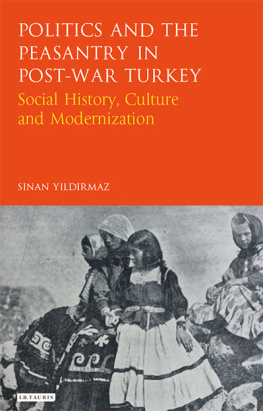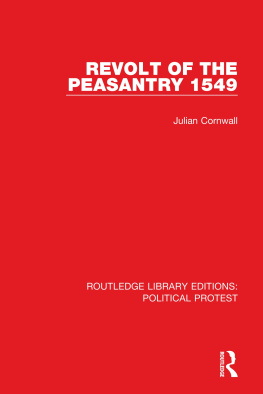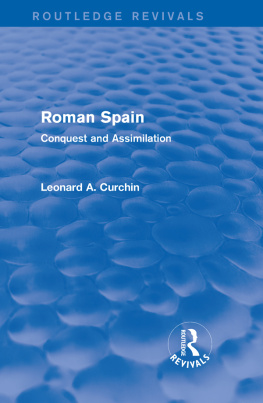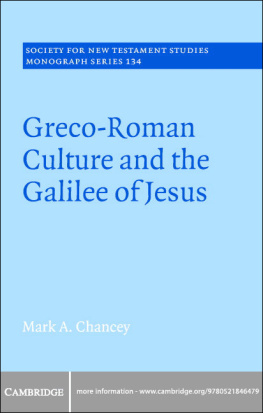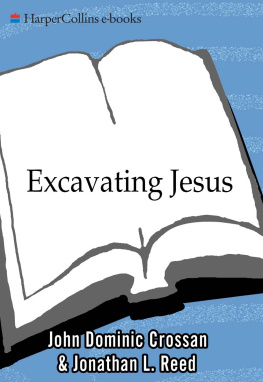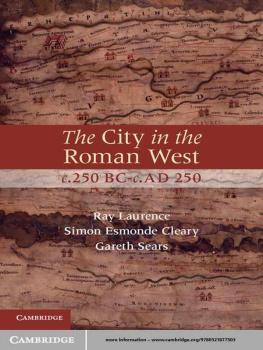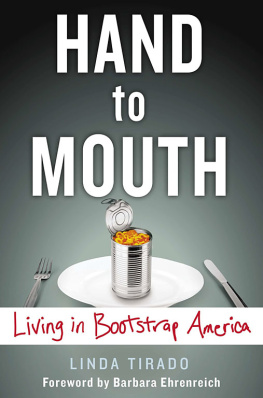Jesús Bermejo Tirado - The Archaeology of Peasantry in Roman Spain
Here you can read online Jesús Bermejo Tirado - The Archaeology of Peasantry in Roman Spain full text of the book (entire story) in english for free. Download pdf and epub, get meaning, cover and reviews about this ebook. genre: Romance novel. Description of the work, (preface) as well as reviews are available. Best literature library LitArk.com created for fans of good reading and offers a wide selection of genres:
Romance novel
Science fiction
Adventure
Detective
Science
History
Home and family
Prose
Art
Politics
Computer
Non-fiction
Religion
Business
Children
Humor
Choose a favorite category and find really read worthwhile books. Enjoy immersion in the world of imagination, feel the emotions of the characters or learn something new for yourself, make an fascinating discovery.

- Book:The Archaeology of Peasantry in Roman Spain
- Author:
- Genre:
- Rating:5 / 5
- Favourites:Add to favourites
- Your mark:
- 100
- 1
- 2
- 3
- 4
- 5
The Archaeology of Peasantry in Roman Spain: summary, description and annotation
We offer to read an annotation, description, summary or preface (depends on what the author of the book "The Archaeology of Peasantry in Roman Spain" wrote himself). If you haven't found the necessary information about the book — write in the comments, we will try to find it.
The Archaeology of Peasantry in Roman Spain — read online for free the complete book (whole text) full work
Below is the text of the book, divided by pages. System saving the place of the last page read, allows you to conveniently read the book "The Archaeology of Peasantry in Roman Spain" online for free, without having to search again every time where you left off. Put a bookmark, and you can go to the page where you finished reading at any time.
Font size:
Interval:
Bookmark:


- Acknowledgments
- Jess Bermejo Tirado, Ignasi Grau Mira Introduction
- Peasant Studies and Roman History
- Looking for Peasant Communities in Roman Spain
- Geographical and Historical Scope
- Methodological Approaches and Data Sources
- Site Typologies and Settlement Diversity
- Rural Economies and Non-elite Networks
- Long-term Approaches and Hidden Peasant Agencies
- Part I: From Traditional to New Approaches: Methodological Insights
- Jess Bermejo Tirado Early Imperial Roman Peasant Communities in Central Spain: Agrarian Structure, Standards of Living, and Inequality in the North of Roman Carpetania
- Introduction
- Peasant Communities and Household Archaeology
- Rural Habitats and Settlement in the North of Roman Carpetania: A Brief Synthesis
- Domestic Modes of Agricultural Production: Archaeological Proxies
- Domestic Patterns of Tableware Consumption
- Habitat Size and Inequality
- Conclusions
- Luz Neira Perceiving the Countryside: Some Thoughts on the Representation of Agrarian Cycles and Tasks in the Mosaics of Roman Spain
- Introduction
- Images of Agrarian Cycles in the Mosaics of Roman Spain
- Viticulture Images in the Mosaics of Roman Spain
- Discussion: Between Rural Depictions and Ideological Representations.
- Final Thoughts
- Ldia Colominas, Abel Gallego-Valle Investigating Livestock Practices in the Countryside of Roman Spain: An Archaeozoological Approach
- Introduction
- The Sites
- Methods
- Results
- Discussion
- Conclusions
- Acknowledgements
- Jess Bermejo Tirado Early Imperial Roman Peasant Communities in Central Spain: Agrarian Structure, Standards of Living, and Inequality in the North of Roman Carpetania
- Part II: Beyond Villascapes: Peasants in Landscapes
- Ignasi Grau Mira A Peasant Landscape in the Eastern Roman Spain. An Archaeological Approach to Territorial Organization and Economic Models
- Introduction: Roman Peasant Landscapes Beyond the Towns and Villae
- The Peasant Landscape in the Alcoi Valley
- Peasant Farms and Villae: Territorial Structure and Economic Models
- Landscape complementarity in the Roman territories: the example of the territorium Dianensis
- Final Remarks
- Victorino Mayoral Herrera, Luis Sevillano Perea, Cristina Isabel Mena Mendez, Martina C. Parini Exploring the Complexity of Roman Agrarian Landscapes. State of the Art and a Study Case from the Southwestern Iberian Peninsula
- Introduction. Rural life in Roman Lusitania: A Concise Review of the State-of-the-art
- The Study Case
- Concluding Remarks: The Surface Archaeological Compound of the Contributa Hinterland as a Palimpsest
- Acknowledgements
- Jess Garca Snchez Roman Peasantry, Spatial Archaeology, and Off-site Survey in Hispania
- Introduction
- Off-site Record and Human Agency
- Off-site Survey and Peasantry in the Roman Spain
- Towards a Digital Analysis of Off-site Survey Data
- Conclusion
- Acknowledgements
- Ignasi Grau Mira A Peasant Landscape in the Eastern Roman Spain. An Archaeological Approach to Territorial Organization and Economic Models
- Part III: Comparing Villae and Peasants Habitats in Settlement Systems
- Vctor Revilla On the Margins of the Villa System? Rural Architecture and Socioeconomic Strategies in North-Eastern Roman Spain
- Introduction
- Identifying the Diversity: The Archaeological Documentation
- Habitat Typologies
- Interpreting the Materialization of the Socioeconomic Patterns
- The Difficult of Making the Roman Peasant Visible
- Acknowledgements
- Margarita Snchez-Simn Villae and Farms: Early Imperial Rural Settlement in the Adaja-Eresma Basin (Central Roman Spain)
- Introduction
- Before the Villa: Peasant Sites in Adaja-Eresma Basin (1st c. BC)
- The Early Imperial Phase
- The Mid-Imperial Rural Habitat
- The Roman Rural Landscape of the Adaja-Eresma Basin
- Discussion
- Alfonso Vigil-Escalera Guirado With the measure you use you will be measured back Late Roman and Early Medieval Peasants in Central Spain on Examination
- Introduction
- Rural Workers or Peasants?
- Differences/Novelties
- Conclusions
- Juan Antonio Quirs Castillo From Villa to Village? Relational Approaches within Roman and Medieval Iberian Rural Societies
- Introduction
- Conceptual and Theoretical Framework
- The Genealogy of Medieval Peasant Studies in Northwestern Iberia
- Settlement Patterns, Economy and Patronage from a Relational Perspective
- Final Remarks
- Acknowledgements
- Grau Mira Ignasi, Jess Bermejo Tirado Conclusions
- Beyond the Roman villae
- Different Strategies, Complementary Objectives
- Future Perspectives
- Vctor Revilla On the Margins of the Villa System? Rural Architecture and Socioeconomic Strategies in North-Eastern Roman Spain
- List of Contributors
- List of Figures
- Index
Font size:
Interval:
Bookmark:
Similar books «The Archaeology of Peasantry in Roman Spain»
Look at similar books to The Archaeology of Peasantry in Roman Spain. We have selected literature similar in name and meaning in the hope of providing readers with more options to find new, interesting, not yet read works.
Discussion, reviews of the book The Archaeology of Peasantry in Roman Spain and just readers' own opinions. Leave your comments, write what you think about the work, its meaning or the main characters. Specify what exactly you liked and what you didn't like, and why you think so.

